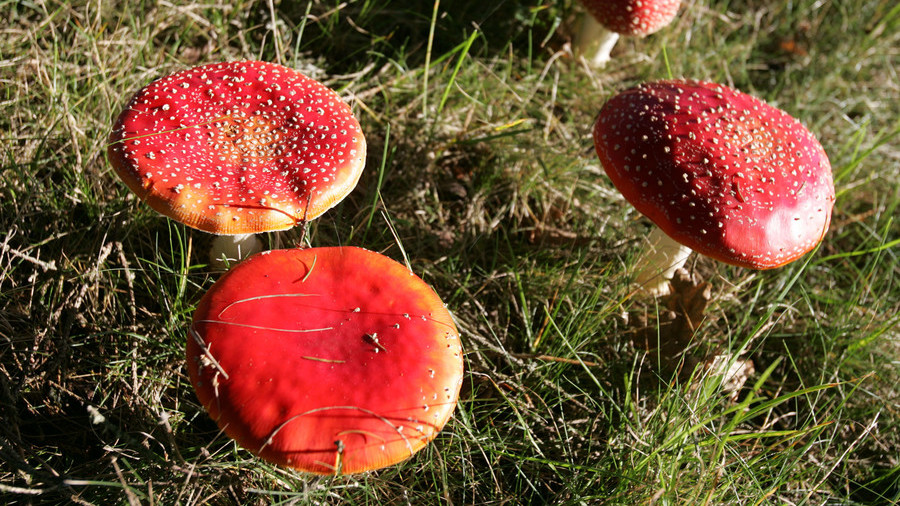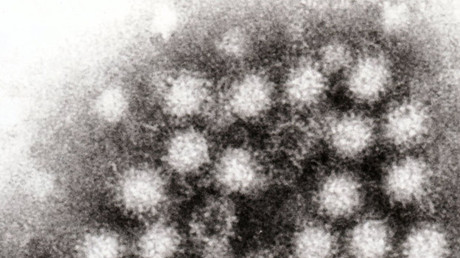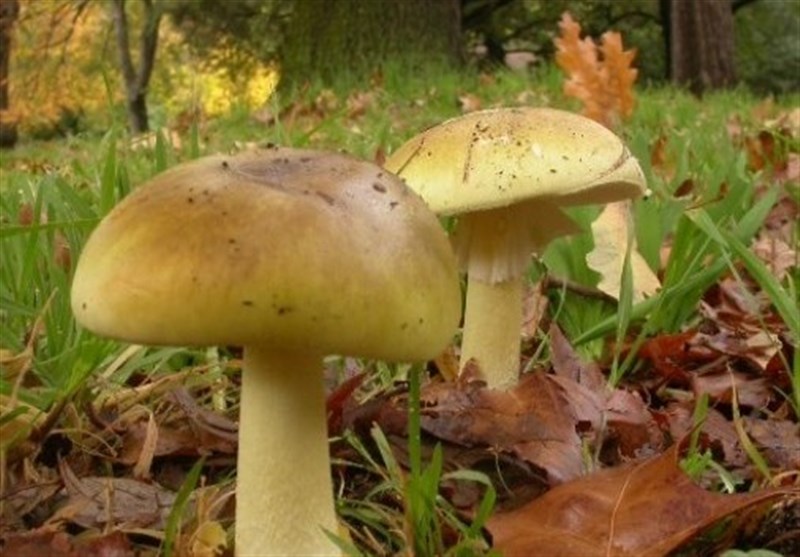https://www.minnpost.com/second-opi...gs-underscores-dangers-wild-mushroom-foraging
Surge in poisonings underscores dangers of wild mushroom foraging
By Susan Perry | 06/05/17

Creative Commons/Archenzo
Amanita phalloides
California experienced a surge in wild mushrooms poisonings last December — poisonings that left three people in need of liver transplants and a toddler with permanent brain damage, according to a report published Friday by the Centers for Disease Control and Prevention (CDC).
The poisonings underscore the very real dangers of mushroom foraging, an activity that has gained popularity with chefs and foodies in recent years.
The 14 Californians in the CDC report were aged 18 months to 93 years. All became ill after eating Amanita phalloides, commonly known as the “death cap” mushroom. As background information in the report points out, the Amanita family of mushrooms is responsible for more than 90 percent of mushroom-related deaths worldwide — most likely because these mushrooms resemble several edible species.
Amanita poisonings — and deaths — have occurred here in Minnesota, too. In 2006, a 10-year-old Minnesotan girl died after eating Amanita bisporigera, commonly known as the eastern American “destroying angel.” A relative had harvested the mushroom during a visit to Phalen Regional Park in St. Paul.
Only a small amount
It does not take much amatoxin — the toxic compounds in these mushrooms — to kill a human. A lethal dose can be as low as 0.1 milligram per kilogram (2.2 pounds) of body weight, and a single mushroom can contain up to 15 milligrams of amatoxin.
Nor does cooking the mushrooms help, as amatoxin is not destroyed by heat.
Once consumed, the amatoxin is quickly absorbed into the body and soon begins to destroy cells in the liver. At first, the damage occurs silently. Symptoms — intense abdominal pain, nausea, vomiting and diarrhea — don’t typically begin until six to 12 hours after the mushroom has been consumed. Those symptoms then quickly lead to severe dehydration.
People who are diagnosed with amatoxin poisoning are typically treated with aggressive amounts of fluids, delivered intravenously, and certain drugs. Sometimes, however, the early symptoms of the disease are misdiagnosed as gastroenteritis, and patients are sent home, only to return a few days later with signs of liver failure. This problem of misdiagnosis is compounded by the fact that the symptoms of mushroom poisoning often ease up for two or three days in the middle of the illness.
Early discharges are believed responsible for the relatively high fatality rate associated with amatoxin poisoning. Between 10 percent and 20 percent of cases end in death.
A massive bloom
California experienced an unusually large bloom of A. phalloides last November due to a combination of heavy rain and warm temperatures, according to the CDC report. This bloom immediately raised concern among members of a San Francisco-based mushroom club — the Bay Area Mycological Society — who alerted the California Poison Control System (CPCS). The club’s members were apparently worried that inexperienced foragers might mistake A. phalloides for benign species of mushrooms.
And that’s exactly what happened. Five days later after receiving the club’s warning, the CPCS received its first report of the season of an A. phalloides poisoning — a 37-year-old Santa Rosa man who had eaten a single death cap mushroom, which he had picked himself.
During the next two weeks, the agency received 13 more reports from four different northern California counties. Fortunately, none of the patients died, although three required liver transplants, including, tragically, an 18-month-old girl.
A poisonous family meal
The child was one of five people who became ill after eating mushrooms at the same meal. A forager — whom the child’s parents apparently didn’t know — had given the family some mushrooms he said he had picked earlier in the day in the mountains. The child’s mother grilled them for dinner for her husband, her daughter (the 18-month-old), her sister and a friend.
During the meal, the mother ate four mushroom caps, the father ate three and the child ate half of one. The mother’s sister ate one cap and a stalk, and the friend ate various “pieces.”
They all began to get sick about nine hours later. Twenty hours after eating the mushrooms, the mother, father and child went to the emergency department of their local hospital, where they were immediately diagnosed and admitted for treatment. The parents remained in the hospital for several days, but fully recovered. The child, however, experienced liver failure and had to undergo a liver transplant. Complications from that surgery caused permanent neurologic damage.
The mother’s sister also had to have a liver transplant — partly because she was initially misdiagnosed with gastroenteritis and sent home. (She had gone to the hospital before her other family members.) When she returned to the emergency department the next day with worsening symptoms, the damage to her liver was too advanced for the organ to be saved.
The family friend sought treatment two days after eating the mushrooms. She spent six days in the hospital and had a complete recovery.
Take no chances
As the CDC report makes clear, extreme caution should be taken when foraging — or purchasing — wild mushrooms for consumption.
“Wild-picked mushrooms should be evaluated by a trained mycologist before ingestion,” the report stresses. “Inexperienced foragers should be strongly discouraged from eating any wild mushrooms.”
If you insist on eating wild mushrooms, make sure you know the symptoms of mushroom poisoning, including the fact that you may not begin to feel ill until hours after you’ve ingested the mushroom. Then be sure to get to a hospital as soon as the symptoms start.
And take a sample of the mushroom with you.
FMI: The CDC report was published in the June 2 issue of the agency’s Morbidity and Mortality Weekly Report, where it can be read in full.
UPDATE: The Minnesota Mycological Society will help people identify any wild mushrooms they are contemplating eating. Just go to the society's website and contact one of their officers. You will, of course, need to send a photo of the mushroom you're querying about. "There are poisonous mushrooms in Minnesota, so caution is advised," said the society's president, John Lamprecht, in a phone interview with MinnPost. "Don't eat it unless you're 100 percent sure." If you're interested in foraging for wild mushrooms here in Minnesota, Lamprecht recommends you join the society, which offers a variety of educational programs.
http://www.foxnews.com/us/2018/03/2...ooms-after-2-dogs-found-dead-in-backyard.html
Woman warns pet owners about poisonous 'Death Angel' mushrooms after 2 dogs found dead in backyard
By Jennifer Earl | Fox News

Janna Joyner said her two dogs died Sunday after eating poisonous mushrooms they found in her backyard. (Janna Joyner)
A North Carolina woman is warning pet owners to comb their lawns for poisonous mushrooms after two of her dogs were found dead in her backyard on Sunday.
Janna Joyner, who fosters several dogs through nonprofits Cause for Paws of North Carolina and German Shepherd Rescue and Adoptions, said "Death Angel" mushrooms -- deadly, poisonous fungus that pops up around the spring -- are to blame for killing her beloved pups and sickening four other dogs.
"Adoni and Drago passed away after ingesting Death Angel (Amanita virosa) mushrooms in my own back yard," Joyner wrote in a Facebook post that has since gone viral with more than 15,000 shares. "The toxins in these mushrooms will cause liver failure in dogs. There isn't an antidote necessarily, so you just have to manage the symptoms."
It was too late for her 3-year-old Saint Bernard, Drago, and 8-year-old lab-retriever mix, Adoni, but Joyner was able to rush the remaining animals that were struggling to stand, salivating and vomiting to the veterinarian.
Tests showed traces of Amatoxin, a deadly toxin in poisonous mushrooms, in the dogs' bloodstreams. Joyner said the mushrooms are especially appealing to dogs because of their "fishy odor and taste."
“A dog that consumes those mushroom can go from healthy to very clinically sick, to dead within 24 to 48 hours. So it’s a very rapid disease syndrome,” David Dorman, a toxicology professor at N.C. State University’s College of Veterinary Medicine, told WRAL.
There's not a specific description of so-called "Death Angel" mushrooms, Dorman said, as they vary in color and length. To be safe, homeowners should remove any form of mushroom that pops up in their yard.
“(It’s) always best to cut them, bag them and throw them away. And then wash your hands yourself so you don’t get exposed,” he advised.
Joyner suggested going a step further: survey areas around your bushes and landscaping. Her friend, Nicole Kincaid, told WRAL that the mushrooms Joyner's "babies" ingested were hidden under a pile of mulch.
"It’s just scary to know how close it was to home and how it can happen to any dog,” said Kincaid. “That’s what we’re really hoping, that we can educate people.”
Echoing her friend, Joyner said she decided to share her story so she can save at least one dog.
"Please, Please, PLEASE clear out all mushrooms from your yard," she begged.
Joyner declined Fox News' request for further comment, saying it's too "hard to talk about over and over."
https://www.rt.com/news/427220-iran-mushroom-poisoning-victims/
9 dead, dozens critical & need liver transplant as 700+ get poisoned by wild mushrooms in Iran
Published time: 20 May, 2018 00:52 Edited time: 20 May, 2018 01:10
Get short URL

FILE PHOTO © Regis Duvignau
“The latest emergency statistics show that 721 people have been poisoned by poisonous mushrooms, of which 190 were hospitalized, 523 were cleared, and nine died,” Mojtaba Khalidi, an emergency services spokesman, told Iranian ISNA news agency.
Read more
 166 children fall ill with vomiting bug in major outbreak at same English primary school
166 children fall ill with vomiting bug in major outbreak at same English primary school
At least 50 of the victims who were hospitalized across Iran’s eight provinces are in critical condition, with some requiring liver transplants to save their lives, emergency services said.
READ MORE: Magic mushrooms are ‘safest drugs’ compared to LSD, ecstasy & cocaine – study
The country’s Ministry of Health attributed the outbreak to spring rain across the mountainous regions of the country and issued a warning advising people to “avoid eating wild and unfamiliar mushrooms,” and refrain from even touching them because “skin toxicity is present in some species of fungi.”
Authorities advised the public not to buy mushrooms from street vendors. Those who experience abdominal pain, nausea, vomiting, or severe dizziness, are advised to drink a lot of fluids and visit a health center immediately.
If you like this story, share it with a friend!
https://www.tasnimnews.com/en/news/...-poisoning-death-toll-in-west-iran-rises-to-8
Mushroom Poisoning Death Toll in West Iran Rises to 8
TEHRAN (Tasnim) - The death toll from eating poisonous wild mushrooms in a number of Iran’s western provinces has risen to 8, a medical official announced, saying more than 680 others have been poisoned, some of whom are in immediate need of liver transplantation.

Consumption of poisonous wild fungi in the Iranian provinces of Kermanshah, Kordestan, Lorestan, Zanjan, West Azerbaijan, Kohgiluye and Boyer-Ahmad, and Qazvin has poisoned 682 people and killed 8, Iran newspaper reported on Saturday, quoting spokesman for Iran's Emergency Services Mojtaba Khaledi as saying.
People were sickened after eating the wild mushrooms that grow in mountainous areas following spring showers, he added, noting that around 50 victims are in critical conditions, some of whom are on the waiting list for liver transplantation.
The appearance of the poisonous mushrooms is so similar to the edible ones that even the local residents could not notice a distinction, the medical official explained, saying the Health Ministry is conducting laboratory tests on 7 strains of those toxic plants.
Surge in poisonings underscores dangers of wild mushroom foraging
By Susan Perry | 06/05/17

Creative Commons/Archenzo
Amanita phalloides
California experienced a surge in wild mushrooms poisonings last December — poisonings that left three people in need of liver transplants and a toddler with permanent brain damage, according to a report published Friday by the Centers for Disease Control and Prevention (CDC).
The poisonings underscore the very real dangers of mushroom foraging, an activity that has gained popularity with chefs and foodies in recent years.
The 14 Californians in the CDC report were aged 18 months to 93 years. All became ill after eating Amanita phalloides, commonly known as the “death cap” mushroom. As background information in the report points out, the Amanita family of mushrooms is responsible for more than 90 percent of mushroom-related deaths worldwide — most likely because these mushrooms resemble several edible species.
Amanita poisonings — and deaths — have occurred here in Minnesota, too. In 2006, a 10-year-old Minnesotan girl died after eating Amanita bisporigera, commonly known as the eastern American “destroying angel.” A relative had harvested the mushroom during a visit to Phalen Regional Park in St. Paul.
Only a small amount
It does not take much amatoxin — the toxic compounds in these mushrooms — to kill a human. A lethal dose can be as low as 0.1 milligram per kilogram (2.2 pounds) of body weight, and a single mushroom can contain up to 15 milligrams of amatoxin.
Nor does cooking the mushrooms help, as amatoxin is not destroyed by heat.
Once consumed, the amatoxin is quickly absorbed into the body and soon begins to destroy cells in the liver. At first, the damage occurs silently. Symptoms — intense abdominal pain, nausea, vomiting and diarrhea — don’t typically begin until six to 12 hours after the mushroom has been consumed. Those symptoms then quickly lead to severe dehydration.
People who are diagnosed with amatoxin poisoning are typically treated with aggressive amounts of fluids, delivered intravenously, and certain drugs. Sometimes, however, the early symptoms of the disease are misdiagnosed as gastroenteritis, and patients are sent home, only to return a few days later with signs of liver failure. This problem of misdiagnosis is compounded by the fact that the symptoms of mushroom poisoning often ease up for two or three days in the middle of the illness.
Early discharges are believed responsible for the relatively high fatality rate associated with amatoxin poisoning. Between 10 percent and 20 percent of cases end in death.
A massive bloom
California experienced an unusually large bloom of A. phalloides last November due to a combination of heavy rain and warm temperatures, according to the CDC report. This bloom immediately raised concern among members of a San Francisco-based mushroom club — the Bay Area Mycological Society — who alerted the California Poison Control System (CPCS). The club’s members were apparently worried that inexperienced foragers might mistake A. phalloides for benign species of mushrooms.
And that’s exactly what happened. Five days later after receiving the club’s warning, the CPCS received its first report of the season of an A. phalloides poisoning — a 37-year-old Santa Rosa man who had eaten a single death cap mushroom, which he had picked himself.
During the next two weeks, the agency received 13 more reports from four different northern California counties. Fortunately, none of the patients died, although three required liver transplants, including, tragically, an 18-month-old girl.
A poisonous family meal
The child was one of five people who became ill after eating mushrooms at the same meal. A forager — whom the child’s parents apparently didn’t know — had given the family some mushrooms he said he had picked earlier in the day in the mountains. The child’s mother grilled them for dinner for her husband, her daughter (the 18-month-old), her sister and a friend.
During the meal, the mother ate four mushroom caps, the father ate three and the child ate half of one. The mother’s sister ate one cap and a stalk, and the friend ate various “pieces.”
They all began to get sick about nine hours later. Twenty hours after eating the mushrooms, the mother, father and child went to the emergency department of their local hospital, where they were immediately diagnosed and admitted for treatment. The parents remained in the hospital for several days, but fully recovered. The child, however, experienced liver failure and had to undergo a liver transplant. Complications from that surgery caused permanent neurologic damage.
The mother’s sister also had to have a liver transplant — partly because she was initially misdiagnosed with gastroenteritis and sent home. (She had gone to the hospital before her other family members.) When she returned to the emergency department the next day with worsening symptoms, the damage to her liver was too advanced for the organ to be saved.
The family friend sought treatment two days after eating the mushrooms. She spent six days in the hospital and had a complete recovery.
Take no chances
As the CDC report makes clear, extreme caution should be taken when foraging — or purchasing — wild mushrooms for consumption.
“Wild-picked mushrooms should be evaluated by a trained mycologist before ingestion,” the report stresses. “Inexperienced foragers should be strongly discouraged from eating any wild mushrooms.”
If you insist on eating wild mushrooms, make sure you know the symptoms of mushroom poisoning, including the fact that you may not begin to feel ill until hours after you’ve ingested the mushroom. Then be sure to get to a hospital as soon as the symptoms start.
And take a sample of the mushroom with you.
FMI: The CDC report was published in the June 2 issue of the agency’s Morbidity and Mortality Weekly Report, where it can be read in full.
UPDATE: The Minnesota Mycological Society will help people identify any wild mushrooms they are contemplating eating. Just go to the society's website and contact one of their officers. You will, of course, need to send a photo of the mushroom you're querying about. "There are poisonous mushrooms in Minnesota, so caution is advised," said the society's president, John Lamprecht, in a phone interview with MinnPost. "Don't eat it unless you're 100 percent sure." If you're interested in foraging for wild mushrooms here in Minnesota, Lamprecht recommends you join the society, which offers a variety of educational programs.
http://www.foxnews.com/us/2018/03/2...ooms-after-2-dogs-found-dead-in-backyard.html
Woman warns pet owners about poisonous 'Death Angel' mushrooms after 2 dogs found dead in backyard
By Jennifer Earl | Fox News

Janna Joyner said her two dogs died Sunday after eating poisonous mushrooms they found in her backyard. (Janna Joyner)
A North Carolina woman is warning pet owners to comb their lawns for poisonous mushrooms after two of her dogs were found dead in her backyard on Sunday.
Janna Joyner, who fosters several dogs through nonprofits Cause for Paws of North Carolina and German Shepherd Rescue and Adoptions, said "Death Angel" mushrooms -- deadly, poisonous fungus that pops up around the spring -- are to blame for killing her beloved pups and sickening four other dogs.
"Adoni and Drago passed away after ingesting Death Angel (Amanita virosa) mushrooms in my own back yard," Joyner wrote in a Facebook post that has since gone viral with more than 15,000 shares. "The toxins in these mushrooms will cause liver failure in dogs. There isn't an antidote necessarily, so you just have to manage the symptoms."
It was too late for her 3-year-old Saint Bernard, Drago, and 8-year-old lab-retriever mix, Adoni, but Joyner was able to rush the remaining animals that were struggling to stand, salivating and vomiting to the veterinarian.
Tests showed traces of Amatoxin, a deadly toxin in poisonous mushrooms, in the dogs' bloodstreams. Joyner said the mushrooms are especially appealing to dogs because of their "fishy odor and taste."
“A dog that consumes those mushroom can go from healthy to very clinically sick, to dead within 24 to 48 hours. So it’s a very rapid disease syndrome,” David Dorman, a toxicology professor at N.C. State University’s College of Veterinary Medicine, told WRAL.
There's not a specific description of so-called "Death Angel" mushrooms, Dorman said, as they vary in color and length. To be safe, homeowners should remove any form of mushroom that pops up in their yard.
“(It’s) always best to cut them, bag them and throw them away. And then wash your hands yourself so you don’t get exposed,” he advised.
Joyner suggested going a step further: survey areas around your bushes and landscaping. Her friend, Nicole Kincaid, told WRAL that the mushrooms Joyner's "babies" ingested were hidden under a pile of mulch.
"It’s just scary to know how close it was to home and how it can happen to any dog,” said Kincaid. “That’s what we’re really hoping, that we can educate people.”
Echoing her friend, Joyner said she decided to share her story so she can save at least one dog.
"Please, Please, PLEASE clear out all mushrooms from your yard," she begged.
Joyner declined Fox News' request for further comment, saying it's too "hard to talk about over and over."
https://www.rt.com/news/427220-iran-mushroom-poisoning-victims/
9 dead, dozens critical & need liver transplant as 700+ get poisoned by wild mushrooms in Iran
Published time: 20 May, 2018 00:52 Edited time: 20 May, 2018 01:10
Get short URL

FILE PHOTO © Regis Duvignau
- 18
“The latest emergency statistics show that 721 people have been poisoned by poisonous mushrooms, of which 190 were hospitalized, 523 were cleared, and nine died,” Mojtaba Khalidi, an emergency services spokesman, told Iranian ISNA news agency.
Read more
 166 children fall ill with vomiting bug in major outbreak at same English primary school
166 children fall ill with vomiting bug in major outbreak at same English primary school At least 50 of the victims who were hospitalized across Iran’s eight provinces are in critical condition, with some requiring liver transplants to save their lives, emergency services said.
READ MORE: Magic mushrooms are ‘safest drugs’ compared to LSD, ecstasy & cocaine – study
The country’s Ministry of Health attributed the outbreak to spring rain across the mountainous regions of the country and issued a warning advising people to “avoid eating wild and unfamiliar mushrooms,” and refrain from even touching them because “skin toxicity is present in some species of fungi.”
Authorities advised the public not to buy mushrooms from street vendors. Those who experience abdominal pain, nausea, vomiting, or severe dizziness, are advised to drink a lot of fluids and visit a health center immediately.
If you like this story, share it with a friend!
https://www.tasnimnews.com/en/news/...-poisoning-death-toll-in-west-iran-rises-to-8
Mushroom Poisoning Death Toll in West Iran Rises to 8
TEHRAN (Tasnim) - The death toll from eating poisonous wild mushrooms in a number of Iran’s western provinces has risen to 8, a medical official announced, saying more than 680 others have been poisoned, some of whom are in immediate need of liver transplantation.
- May, 19, 2018 - 15:06
- Society/Culture
- Comments

Consumption of poisonous wild fungi in the Iranian provinces of Kermanshah, Kordestan, Lorestan, Zanjan, West Azerbaijan, Kohgiluye and Boyer-Ahmad, and Qazvin has poisoned 682 people and killed 8, Iran newspaper reported on Saturday, quoting spokesman for Iran's Emergency Services Mojtaba Khaledi as saying.
People were sickened after eating the wild mushrooms that grow in mountainous areas following spring showers, he added, noting that around 50 victims are in critical conditions, some of whom are on the waiting list for liver transplantation.
The appearance of the poisonous mushrooms is so similar to the edible ones that even the local residents could not notice a distinction, the medical official explained, saying the Health Ministry is conducting laboratory tests on 7 strains of those toxic plants.

 Email
Email Share
Share Tweet
Tweet Print
Print